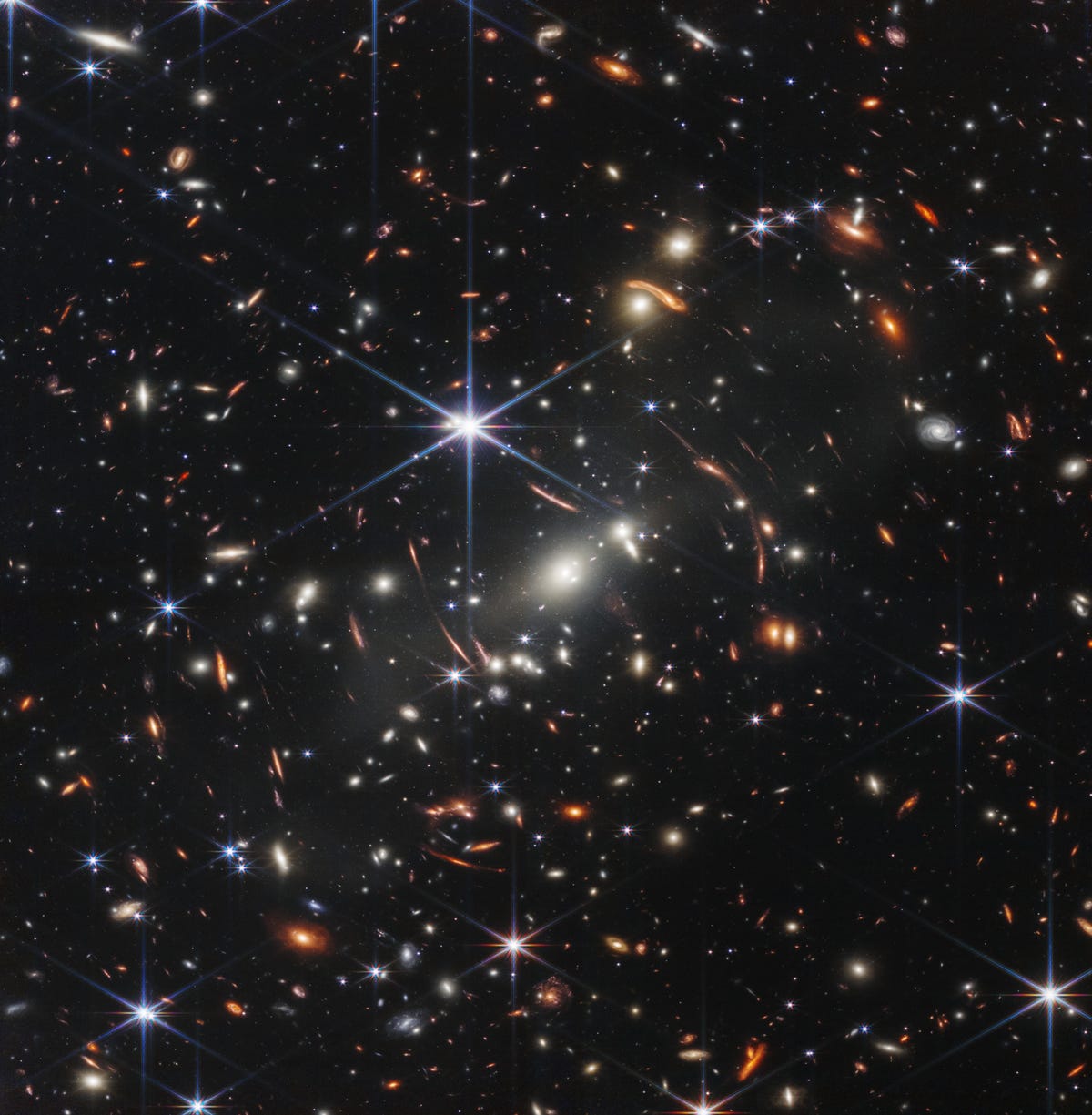NASA’s Webb Space Telescope Drops It’s First Warped Look Through Space and Time
Less than a century ago, we — humans — believed the universe ended at the very edge of the Milky Way. At the point where the last starlight of our home galaxy winked out, an endless nothing began.
Until Edwin Hubble. The famed astronomer diligently scoured the sky for blinking stars from Mount Wilson Observatory in California. His work with the Hooker telescope practically doubled the size of the universe in 1923, when he and others helped reveal that Andromeda was not a tightly packed bundle of stars within the Milky Way, but its very own galaxy, 2.5 million light-years away. Hubble knew how powerful technological advances were: Bigger, better telescopes would help expand our horizons ever further.
Eighty years later, Hubble’s namesake space telescope would alter our view of the cosmic horizon once again with the release of the Hubble Ultra Deep Field image, a photograph of the universe that extends so far back in space and time that it revealed galaxies birthed just 600 million years after the Big Bang.
Today, as of July 11, 2022, our horizon expands once more. One hundred years of progress – in telescopy, astronomy, astrophysics, engineering, rocket science, mathematics, hell, even streaming online video – has led to NASA unveiling the first image obtained by the James Webb Space Telescope.
After a protracted wait that led to a heated discussion of NASA TV’s “hold music” online, it was President Joe Biden who had the honor of releasing Webb’s first look across the universe, an image dubbed “Webb’s First Deep Field” on Monday. The press conference lasted for just 10 minutes and was a huge missed opportunity, but it delivered a historic first image from across the cosmos.
“If you held a grain of sand on the tip of your finger at arm’s length, that is the part of the universe that you’re seeing — just one little speck,” said NASA Administrator Bill Nelson during the press conference.
The full image is below.

The whole shebang of the highest-resolution image of the infrared universe yet.
NASA, ESA, CSA, and STScI
The Deep Field examines a corner of space known as SMACS 0723, which has been eyed by space telescopes such as Hubble. It contains a mammoth cluster of galaxies that function as a lens, magnifying the light of galaxies from much farther into the cosmos.
One of the most notable aspects of this Webb image — and the images to come — is the six-pointed light you can see in the image, a function of how the mirrors in the James Webb telescope are shaped.
There’s also a circular smudging of light…
Read More: NASA’s Webb Space Telescope Drops It’s First Warped Look Through Space and Time
